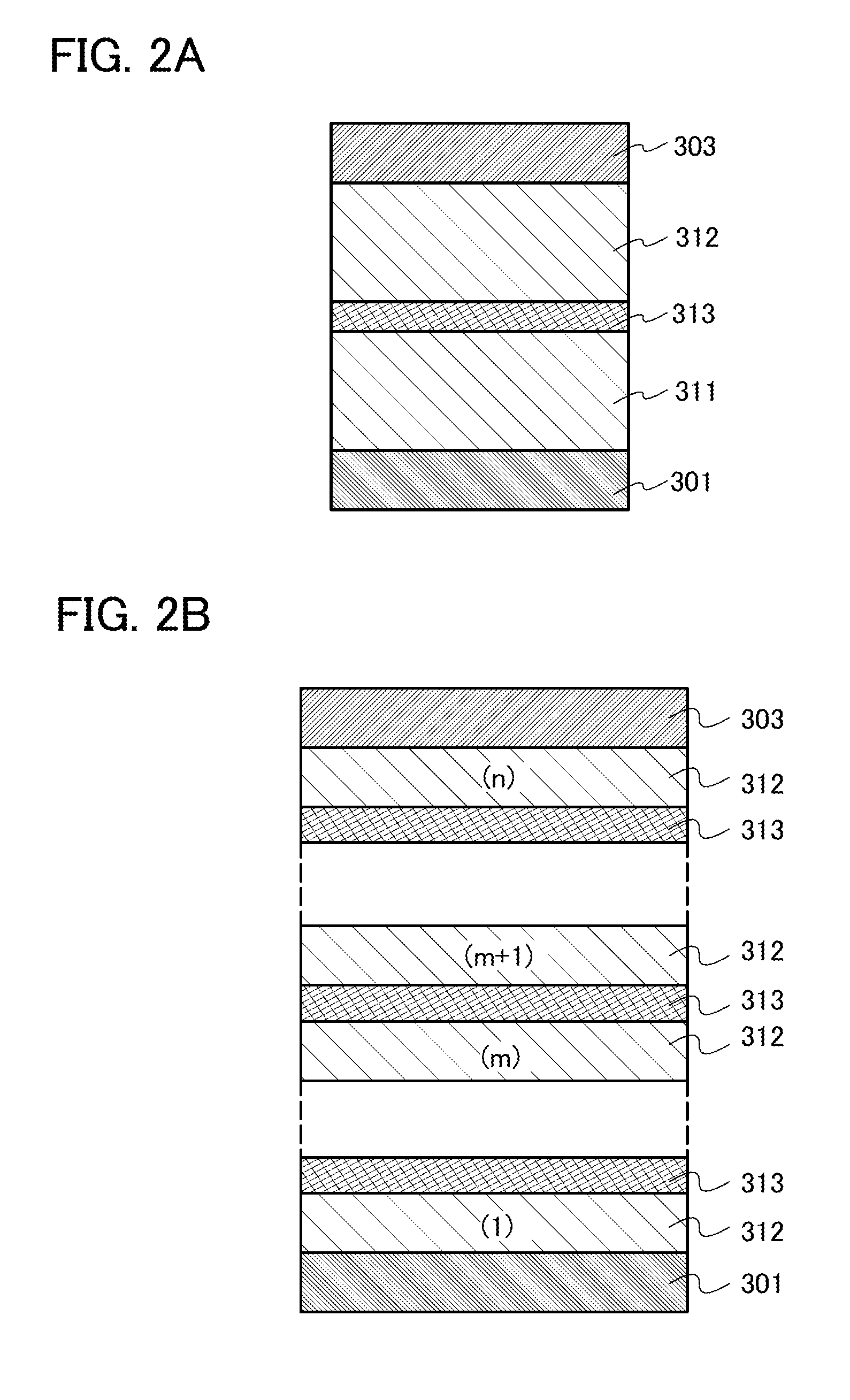Heterocyclic compound, light-emitting element, light-emitting device, electronic device, and lighting device
a technology of light-emitting elements and compounds, applied in the direction of organic semiconductor devices, thermoelectric devices, organic chemistry, etc., can solve the problems of reducing the excitation energy of triplets, and achieve the effects of low driving voltage, long life and high emission efficiency
- Summary
- Abstract
- Description
- Claims
- Application Information
AI Technical Summary
Benefits of technology
Problems solved by technology
Method used
Image
Examples
embodiment 1
[0090]In this embodiment, a heterocyclic compound according to one embodiment of the present invention is described.
[0091]One embodiment of the present invention is a heterocyclic compound represented by the general formula (G1).
[0092]In the general formula (G1), any one of R1 to R10 represents a substituent represented by the general formula (G1-1), another one of R1 to R10 represents a substituent represented by the general formula (G1-2), and the others separately represent hydrogen, an alkyl group having 1 to 6 carbon atoms, a substituted or unsubstituted phenyl group, or a substituted or unsubstituted biphenyl group. Further, α1 in the general formula (G1-1) and α2 in the general formula (G1-2) separately represent a substituted or unsubstituted phenylene group or a substituted or unsubstituted biphenyldiyl group, and A1 in the general formula (G1-1) and A2 in the general formula (G1-2) separately represent a substituted or unsubstituted carbazolyl group, a substituted or unsub...
embodiment 2
[0153]In this embodiment, as one embodiment of the present invention, a light-emitting element in which any of the heterocyclic compounds described in Embodiment 1 is used is described with reference to FIGS. 1A and 1B. This embodiment shows a light-emitting element in which the heterocyclic compound is used for a light-emitting layer.
[0154]In the light-emitting element of this embodiment, an EL layer having at least a light-emitting layer is interposed between a pair of electrodes. The EL layer may also have a plurality of layers in addition to the light-emitting layer. The plurality of layers is a combination of layers containing a substance with a high carrier-injection property and a substance with a high carrier-transport property, which are stacked so that a light-emitting region is formed in a region away from the electrodes, that is, so that the carriers are recombined in an area away from the electrodes. In this specification, the layer containing a substance with a high ca...
embodiment 3
[0212]In Embodiment 3, a mode of a light-emitting element having a structure in which a plurality of light-emitting units is stacked (hereinafter, referred to as stacked-type element) is described with reference to FIGS. 2A and 2B. This light-emitting element includes the plurality of light-emitting units between a first electrode and a second electrode.
[0213]In FIG. 2A, a first light-emitting unit 311 and a second light-emitting unit 312 are stacked between a first electrode 301 and a second electrode 303. In this embodiment, the first electrode 301 functions as an anode and the second electrode 303 functions as a cathode. The first electrode 301 and the second electrode 303 can be the same as those in Embodiment 2. Further, the first light-emitting unit 311 and the second light-emitting unit 312 may have the same or different structures. The first light-emitting unit 311 and the second light-emitting unit 312 may be the same as those in Embodiment 2, or either of the units may be ...
PUM
 Login to View More
Login to View More Abstract
Description
Claims
Application Information
 Login to View More
Login to View More - R&D
- Intellectual Property
- Life Sciences
- Materials
- Tech Scout
- Unparalleled Data Quality
- Higher Quality Content
- 60% Fewer Hallucinations
Browse by: Latest US Patents, China's latest patents, Technical Efficacy Thesaurus, Application Domain, Technology Topic, Popular Technical Reports.
© 2025 PatSnap. All rights reserved.Legal|Privacy policy|Modern Slavery Act Transparency Statement|Sitemap|About US| Contact US: help@patsnap.com



